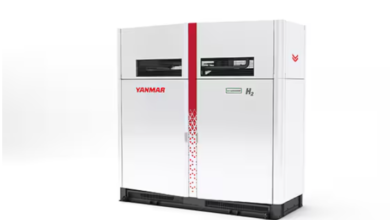Nippon melts glass with a hydrogen-oxygen burner
Nippon will work now toward the technology for a mass production process.

Nippon Electric Glass Co., Ltd. has demonstrated the melting of glass using only hydrogen fuel from a hydrogen-oxygen combustion burner.
The hydrogen-oxygen combustion burner has been jointly developed with Taiyo Nippon Sanso Corporation. The burner can change the mixing ratio of natural gas and hydrogen.
The demonstration confirmed that in either combustion method used, only hydrogen or a mixture of hydrogen and natural gas, a melting capacity equivalent to that from the combustion of only natural gas could be obtained by adjusting the flow rate of fuel according to the mixing ratio. This enables oxygen combustion technology and hydrogen combustion technology to be combined, thereby resulting in zero CO2 emissions from combustion.
For glass melting, Nippon promoted switching fuel from heavy oil to LPG and natural gas, which generate less CO2, and completed the conversion to natural gas in 2010.
Hydrogen-oxygen combustion technology is expected to help decarbonise carbon neutrality by being combined with the enhancement of the power ratio of melting.
Oxygen combustion technology is a combustion technology that removes more excess nitrogen than air combustion, thereby reducing the amount of exhaust gas/heat and consequently lowering fuel and energy consumption and reducing the emissions of CO2 and thermal nitrogen oxides (NOx). It has been introduced in almost all melting furnaces of the company.
In the medium-term business plan ‘EGP2026’, Nippon has set the “promotion of carbon neutrality” as a priority measure and is working on the technological development of CO2-free fuels, such as hydrogen, achieving carbon neutrality by 2050.
